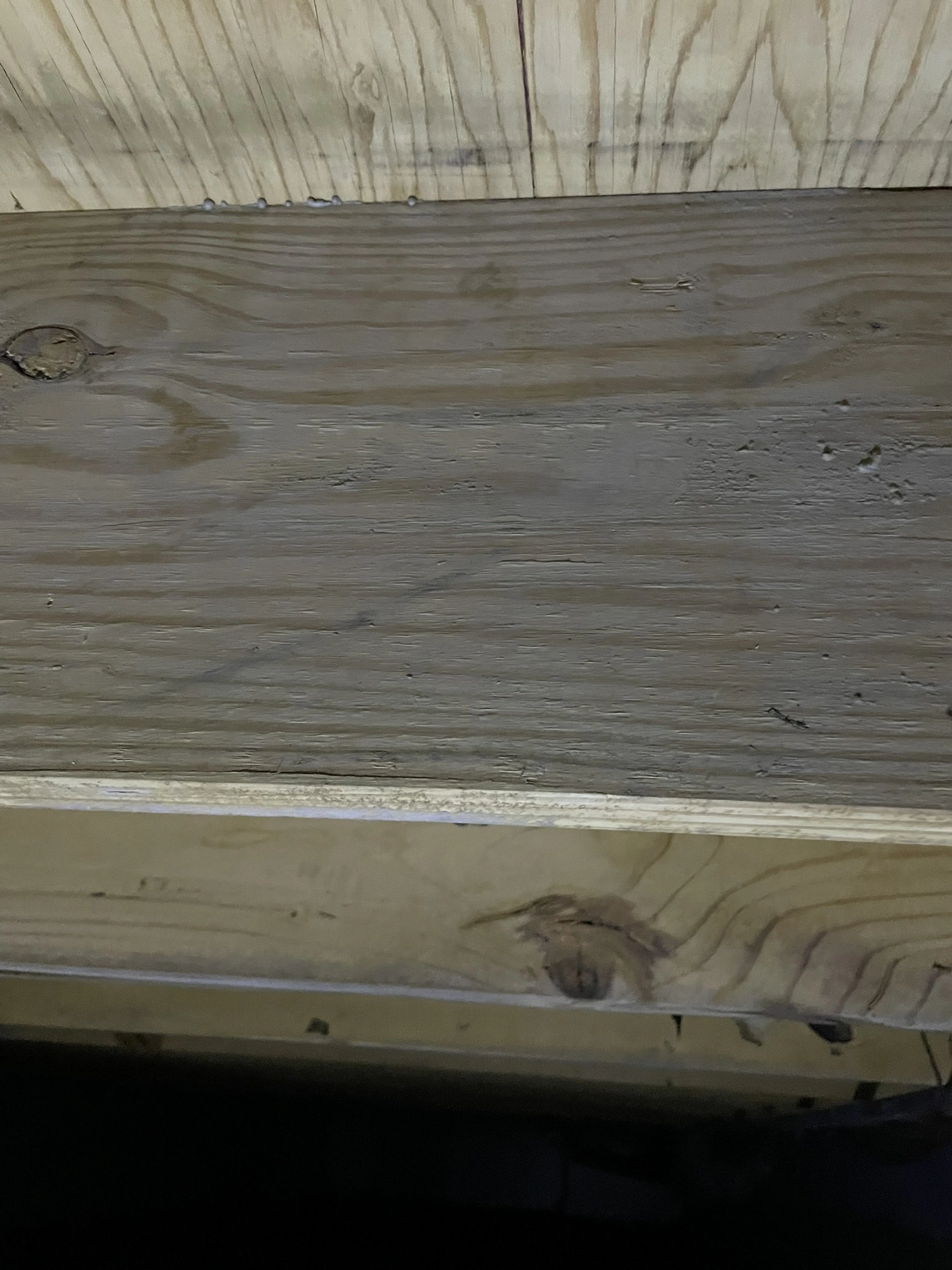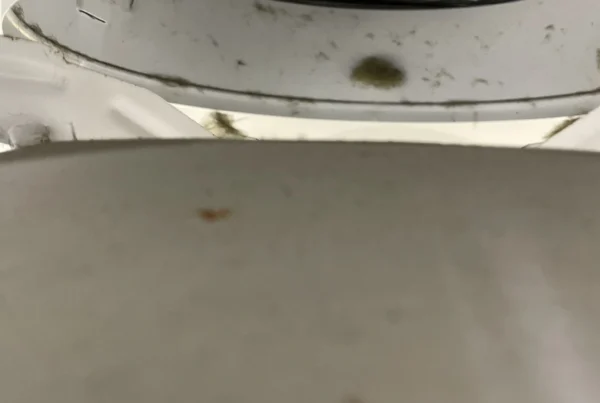We’ve Been Here Before
We were asked to re-evaluate a crawl space we had worked in in the past, due to a concern that arose during a home inspection. This Zionsville, Indiana home is located in a beautiful location in a desirable neighborhood. The potential buyers and the sellers of the property were both frustrated with the presence of potential mold growth in the home, putting the real estate deal at risk. Unfortunately, this was the second time that the home was facing the loss of a buyer due to concerns over potential mold growth.
The Continuing Issue
The first potential buyer’s home inspection found discoloration present underneath the furnace. They took several photographs of the area, indicating “unidentified microbial growth” on “some crawlspace joists.” As you can imagine, this statement raised alarm with the potential buyers. Indiana Mold Remediation concluded that this was likely not microbial growth, but these buyers decided to walk away from the deal due to this and other concerns.

The Second Home Inspection
A second home inspector, for new potential buyers, took photos of several joists with “visible mold” present. I believed this to be dust or dirt, not mold.

Multiple contractors, including Indiana Mold Remediation, had done previous work in this crawl space. A portion of the crawl space had been painted; which raises concerns with inspectors because it indicates likely water and mold issues, and they can’t see what’s under the paint. The home inspection report called this out and prompted the request for additional information, clarification and evaluation. This is one of the reasons that we typically do not recommend the application of pigmented sealers (paint) in crawl spaces and attics.

Re-Inspecting the Crawl Space
When I re-inspected the crawl space; I found it to be dry, with a dehumidifier and adequate vapor barrier installed. Floor joists throughout were reasonably clean and, although dusty, there did not appear to be a significant mold problem present.
The dehumidifier was draining underneath the installed, sealed vapor barrier. Ideally, this would be rerouted to sump well or sewer drain line; however, this did not appear to be a significant moisture retention problem.
I believed the remaining areas of discoloration were actually just water staining and iron-oxide staining. Water staining is caused by the movement of water through a material carrying minerals and other contaminants. These are pushed through the material as water is available leaving a collection of oxidized particulate that appears as water staining. Oxidation of the underlying material and the transported particulates work to form a variety of colors and patterns in wood. Iron-Oxide staining occurs when metal in nails, ductwork, fasteners and other components get wet, some of the iron is oxidized forming iron oxide which reacts with the naturally occurring tannins in wood to make ferric tannate, darkening the wood with a black discoloration often misidentified as “black mold.” These two stain types are often found within and around each other. Neither are health concerns and are simply evidence of previous water, not necessarily a current mold growth concern.
To verify that this was the case, we collected both a microbiological sample as well as a total particle analysis (TPA) sample from the same location. The location was chosen due to its centralized position within the crawlspace and representative of the type of contaminant the home inspector expressed concern over.
Editor’s Note:
Collecting Mold Samples
Brian Lester, of Indiana Mold Remediation, collected samples from the crawl space to send to the lab.
In the video, he explains that he is taking two samples here for two different tests. One is a standard swab test for mold, the other is a Total Particle Analysis (TPA) to determine exactly what the substance is, if not mold.
This customer was trying to sell their home, and Brian was determined to get the information that would enable them to do so.
Test Results
Testing confirmed my original belief, that the area had no fungal growth present (no mold). The TPA test found the presence of primarily silicates with some dander (skin cells) cellulose fibers (wood) and Ash and Char-like soot (combustion by-products). In other words, the primary contaminant was dirt.
- My Prediction: No, This is Not Mold
- Test Result: No, This is Not Mold
In my opinion, this is another example of unfounded fears created by over-statements and assumptions and reiterates the importance of relying on a professional assessment of an area before conclusions are drawn. It can be very challenging to relieve concerns once they have arisen, but education and data are key.

Conclusion
Not everything that looks wet or dirty is mold, but sometimes you need to get some testing done to confirm it. If these substances had been tested prior to listing the home, the seller could have quickly supplied documentation that it wasn’t a mold problem.
Remember: When listing your home, it is always a good idea to get crawl spaces and attics inspected before buyers are involved.




